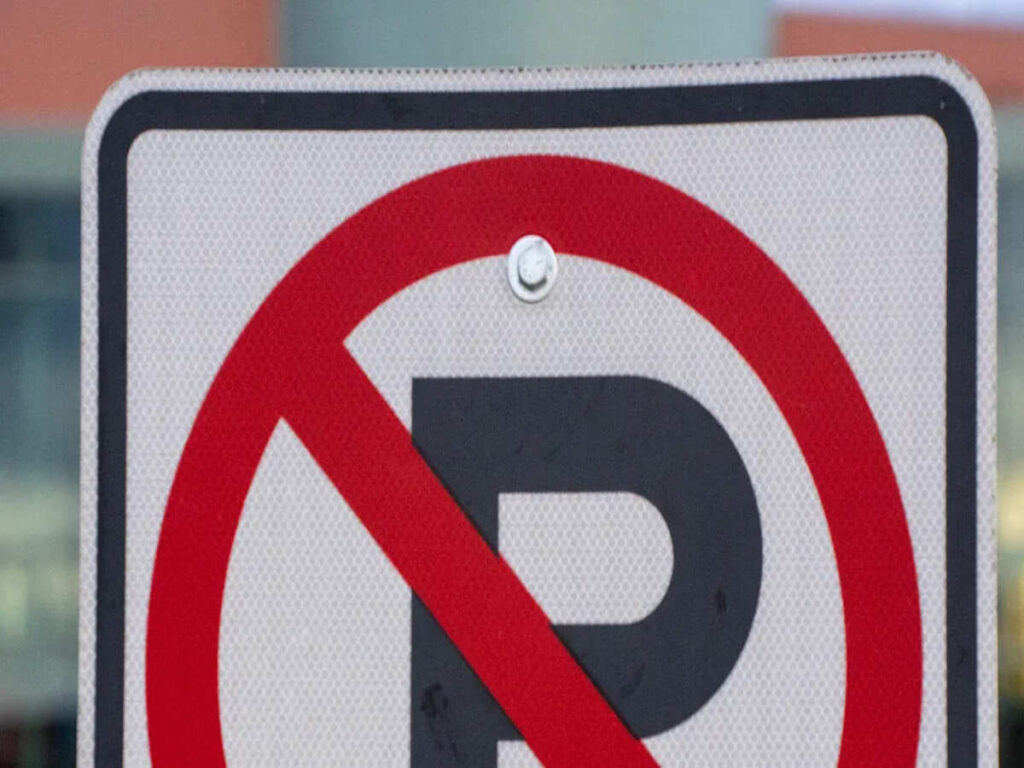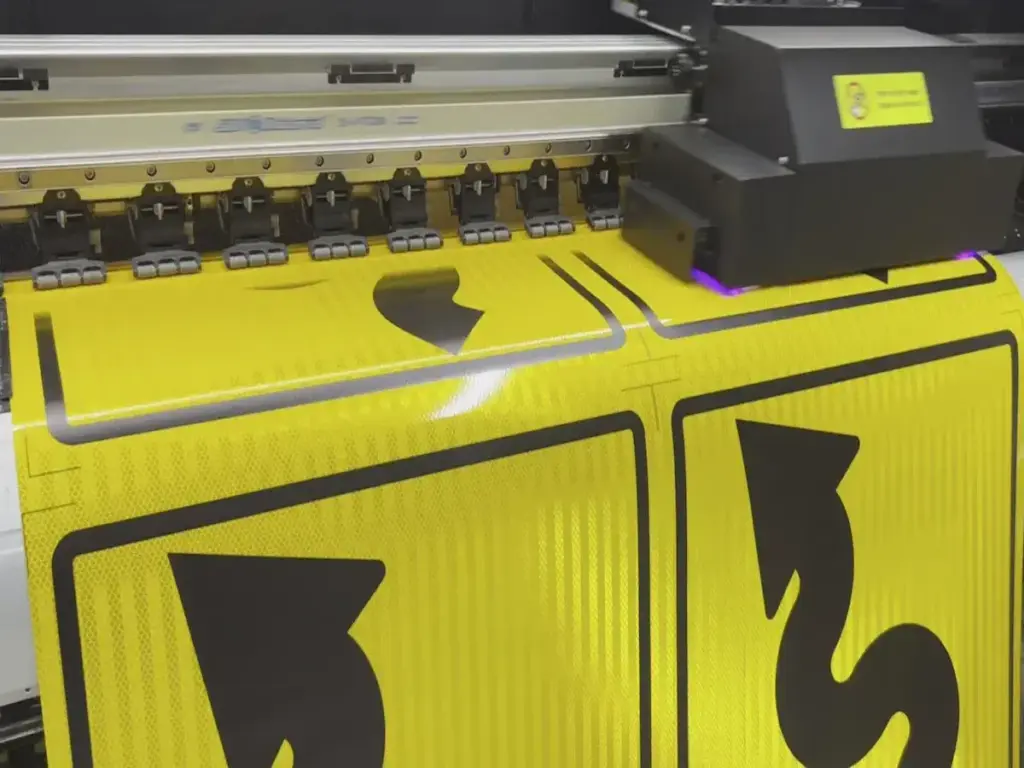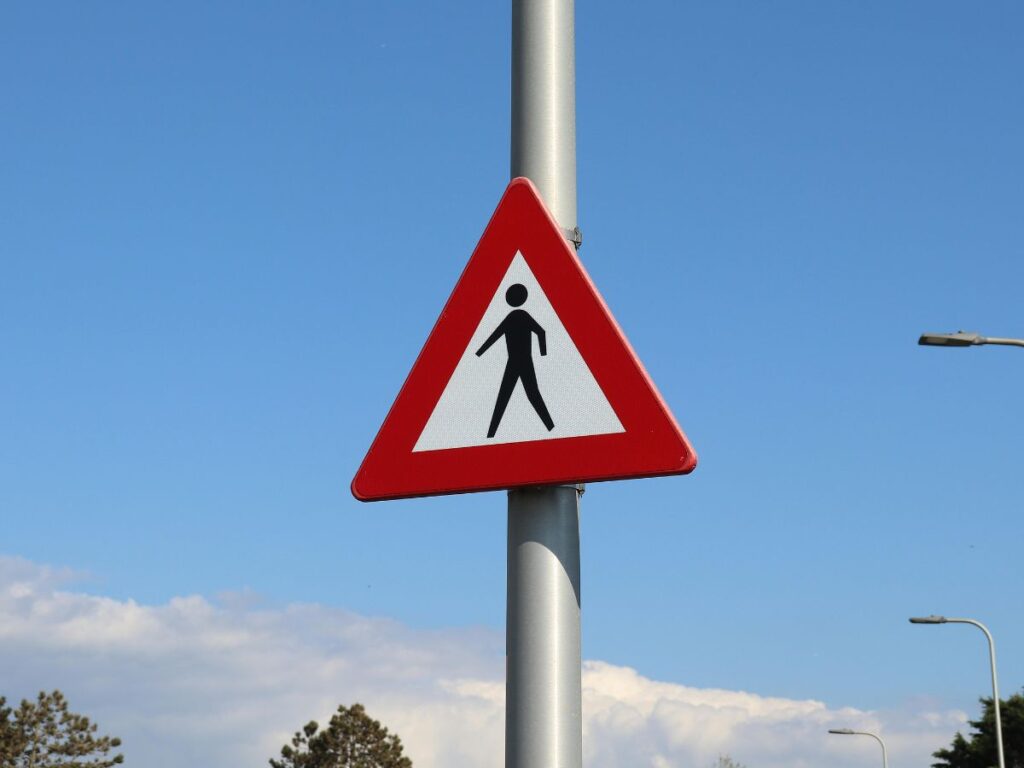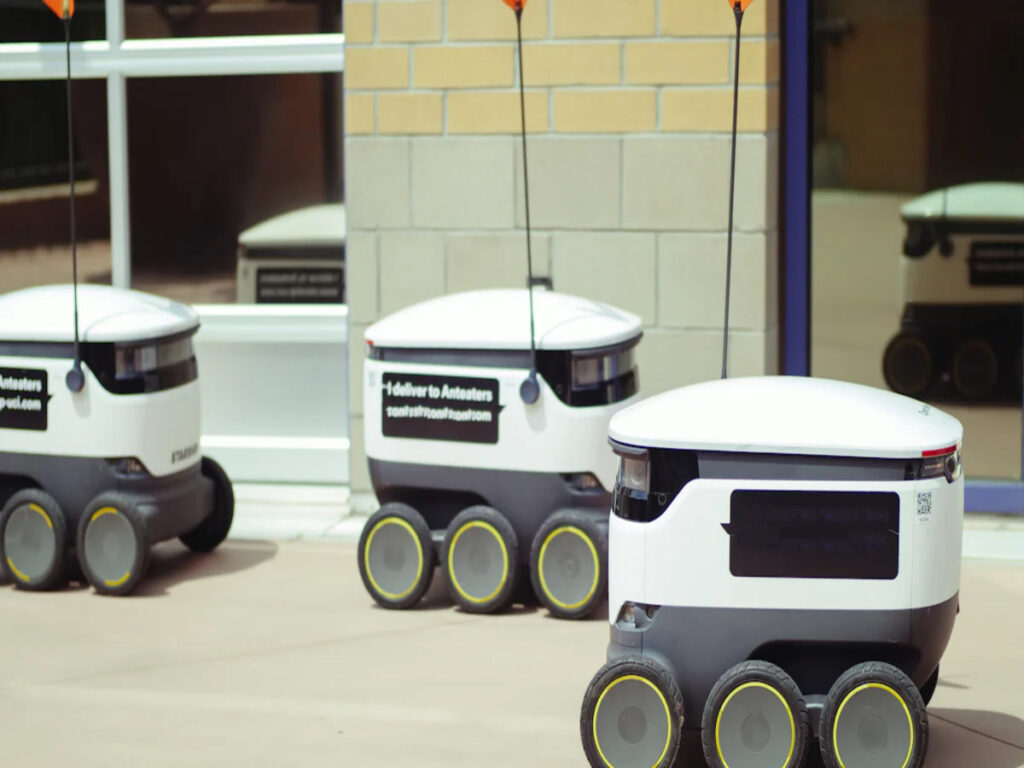
आप मुठभेड़ करते हैं नारंगी यातायात शंकु दैनिक, लेकिन क्या आपने कभी आधुनिक यातायात प्रबंधन में उनकी भूमिका पर विचार किया है? ये ट्रैफिक शंकु, उन्नत V2I प्रौद्योगिकी के साथ संयुक्त, बेहतर सड़कें बनाएं. यह एकीकरण वास्तविक समय में ड्राइवरों को खतरों के प्रति सचेत करके सुरक्षा में सुधार करता है. यह वाहनों और बुनियादी ढांचे के बीच संचार को बढ़ाता है, चिकनी यातायात प्रवाह सुनिश्चित करना. इस तकनीक के साथ, आप कम देरी और सुरक्षित यात्रा का अनुभव कर सकते हैं. दुर्घटनाओं को कम करके और सड़क उपयोग को अनुकूलित करके, ये नवाचार यातायात संचालन के तरीके को बदल देते हैं, सड़कों को अधिक कुशल और विश्वसनीय बनाना.
यातायात प्रबंधन में नारंगी यातायात शंकु की भूमिका

नारंगी ट्रैफ़िक शंकु का पारंपरिक उपयोग
निर्माण क्षेत्रों में यातायात का मार्गदर्शन करना
आप अक्सर निर्माण क्षेत्रों में नारंगी यातायात शंकु देखते हैं, जहां वे व्यवस्था बनाए रखने में महत्वपूर्ण भूमिका निभाते हैं. ये शंकु रखरखाव से गुजरने वाले क्षेत्रों के माध्यम से वाहनों को सुरक्षित रूप से मार्गदर्शन करते हैं. वे कार्य क्षेत्रों और चलते यातायात के बीच स्पष्ट अवरोध पैदा करते हैं, श्रमिकों और ड्राइवरों की सुरक्षा सुनिश्चित करना. उनका चमकीला रंग और परावर्तक सतहें उन्हें अत्यधिक दृश्यमान बनाती हैं, यहां तक कि कम रोशनी की स्थिति में भी. गलियों को चिह्नित करके और मोड़ों का संकेत देकर, वे यातायात प्रवाह को नियंत्रित करने और ड्राइवरों के लिए भ्रम को कम करने में मदद करते हैं.
खतरनाक क्षेत्रों एवं मार्गों को चिन्हित करना
नारंगी यातायात शंकु आपको सड़क पर खतरनाक क्षेत्रों के बारे में भी चेतावनी देते हैं. वे असुरक्षित स्थितियों का संकेत देते हैं, जैसे गड्ढे, फैल, या मलबा, संभावित खतरों से बचने में आपकी सहायता करना. इसके अलावा, वे पथों को चिह्नित करते हैं, वाहनों को बंद सड़कों या दुर्घटना स्थलों से दूर ले जाना. यह सुनिश्चित करता है कि सभी को सुरक्षित रखते हुए यातायात सुचारू रूप से चलता रहे. उनकी उपस्थिति आपको धीमी गति से चलने और सतर्क रहने के लिए सचेत करती है, विशेष रूप से भारी मशीनरी या कर्मियों वाले क्षेत्रों में.
पारंपरिक यातायात प्रबंधन उपकरणों की सीमाएँ
वास्तविक समय अनुकूलन क्षमता का अभाव
पारंपरिक यातायात शंकु, प्रभावी रहते हुए, बदलती परिस्थितियों के अनुरूप ढलने की क्षमता का अभाव. एक बार रखा गया, वे स्थिर रहते हैं, दुर्घटनाओं या यातायात पैटर्न में बदलाव जैसे अचानक परिवर्तनों पर प्रतिक्रिया करने में असमर्थ. यह गतिशील स्थितियों में उनकी उपयोगिता को सीमित करता है जहां प्रभावी यातायात प्रबंधन के लिए वास्तविक समय अपडेट महत्वपूर्ण हैं.
ड्राइवरों के साथ सीमित संचार क्षमताएँ
एक और कमी ड्राइवरों के साथ सीधे संवाद करने में उनकी असमर्थता है. नारंगी ट्रैफ़िक शंकु जानकारी संप्रेषित करने के लिए पूरी तरह से उनकी दृश्यता पर निर्भर करते हैं. वे सड़क की स्थिति के बारे में वास्तविक समय अलर्ट या अपडेट प्रदान नहीं कर सकते हैं. बातचीत की इस कमी के कारण देरी या भ्रम हो सकता है, विशेषकर जटिल यातायात परिदृश्यों में. आधुनिक प्रौद्योगिकी, जैसे V2I सिस्टम, बुनियादी ढांचे और वाहनों के बीच वास्तविक समय संचार को सक्षम करके इन अंतरालों को संबोधित करता है.
V2I संचार प्रौद्योगिकी का परिचय
V2I टेक्नोलॉजी क्या है??
V2I की परिभाषा और अवलोकन
वाहन-असंतुलन (V2i) प्रौद्योगिकी वाहनों और सड़क प्रणालियों के बीच एक संचार नेटवर्क बनाती है. यह वायरलेस तरीके से संचालित होता है, वाहनों को उपकरणों से जानकारी साझा करने और प्राप्त करने की अनुमति देना आरएफआईडी पाठक, कैमरा, और डिजिटल साइनेज. यह द्वि-दिशात्मक प्रणाली ट्रैफ़िक स्थितियों के बारे में वास्तविक समय पर अपडेट प्रदान करता है, निर्माण क्षेत्र, और पार्किंग की उपलब्धता. निर्बाध डेटा विनिमय को सक्षम करके, V2I ट्रैफ़िक प्रबंधन को बढ़ाता है और आपके ड्राइविंग अनुभव को बेहतर बनाता है.
V2I-सक्षम बुनियादी ढांचे के उदाहरण
आप पा सकते हैं V2I तकनीक विभिन्न स्मार्ट अवसंरचना प्रणालियों में एकीकृत. उदाहरण के लिए:
- स्मार्ट ट्रैफिक सिग्नल वास्तविक समय की भीड़भाड़ डेटा के आधार पर अपना समय समायोजित करते हैं.
- डिजिटल सड़क संकेत मौसम की स्थिति या दुर्घटनाओं के बारे में लाइव अपडेट प्रदर्शित करते हैं.
- कैमरे और सेंसर यातायात प्रवाह की निगरानी करते हैं और संभावित खतरों के बारे में वाहनों को अलर्ट भेजते हैं.
ये उदाहरण दर्शाते हैं कि कैसे V2I-सक्षम बुनियादी ढांचा सुरक्षित और अधिक कुशल सड़कों का समर्थन करता है.
V2I की मुख्य विशेषताएं और क्षमताएं
वाहनों और बुनियादी ढांचे के बीच वास्तविक समय डेटा विनिमय
V2I तकनीक वास्तविक समय संचार में उत्कृष्टता प्राप्त करती है. यह यातायात की भीड़ पर डेटा कैप्चर करता है, सड़क की स्थिति, और निर्माण स्थल. यह जानकारी वायरलेस तरीके से वाहनों तक प्रसारित की जाती है, आपको सूचित निर्णय लेने में मदद करना. उदाहरण के लिए, यदि कोई निर्माण क्षेत्र आगे है, V2I आपको गति धीमी करने या वैकल्पिक मार्ग लेने के लिए सचेत कर सकता है. स्मार्ट ट्रैफिक सिग्नल सिग्नल टाइमिंग को संशोधित करने के लिए भी इस डेटा का उपयोग करते हैं, चिकनी यातायात प्रवाह सुनिश्चित करना.
ड्राइवरों के लिए स्थितिजन्य जागरूकता बढ़ाना
V2I तकनीक महत्वपूर्ण अपडेट प्रदान करके आपकी स्थितिजन्य जागरूकता में सुधार करती है. यह आपको ट्रैफिक लाइट की स्थिति के बारे में सूचित करता है, मौसम संबंधी सलाह, और दुर्घटना-ग्रस्त क्षेत्र. ये वास्तविक समय अलर्ट आपको सड़क की स्थिति का अनुमान लगाने और उसके अनुसार अपनी ड्राइविंग को समायोजित करने में मदद करते हैं. By understanding traffic patterns better, you can navigate roads more safely and efficiently.
बख्शीश: V2I technology not only enhances safety but also reduces delays, making your journeys more predictable and stress-free.
Synergy Between Orange Traffic Cones and V2I Technology
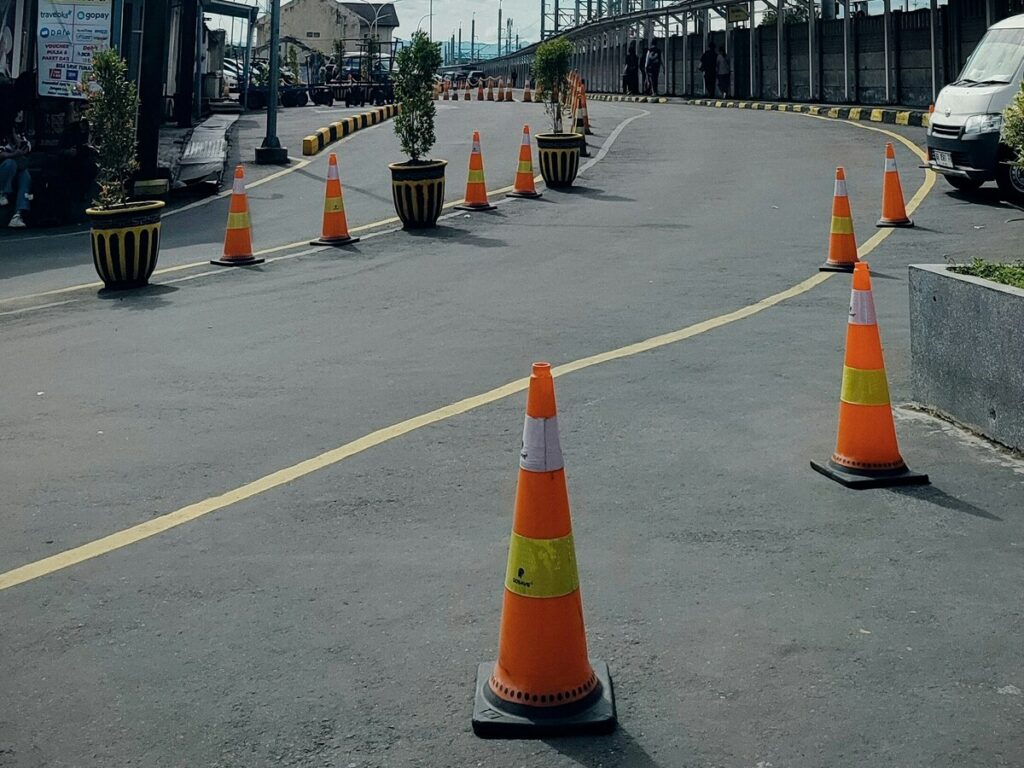
How V2I Enhances the Functionality of Orange Traffic Cones
Embedding sensors in traffic cones for real-time updates
Embedding sensors in orange traffic cones transforms them into smart tools for traffic management. ये सेंसर यातायात प्रवाह और सड़क की स्थिति में बदलाव का पता लगाते हैं, providing real-time data to traffic systems. उदाहरण के लिए, when congestion builds up or an accident occurs, the sensors send alerts to authorities. This ensures quick responses to incidents, improving road safety and efficiency.
Smart cones also share information with vehicles through V2I technology. They notify drivers about hazards, निर्माण क्षेत्र, or detours ahead. This real-time communication helps you make better decisions on the road. By integrating sensors, orange traffic cones become more than just static markers. They actively contribute to safer and smoother traffic flow.
Enabling dynamic traffic flow adjustments
With V2I technology, orange traffic cones adapt to changing conditions. Smart cones equipped with sensors can adjust their placement or send alerts to vehicles when traffic patterns shift. उदाहरण के लिए, पीक आवर्स के दौरान, they can guide vehicles to alternate routes, कंजेशन को कम करना. निर्माण क्षेत्र में, they can signal lane changes dynamically, ensuring a steady traffic flow.
This adaptability minimizes delays and confusion for drivers. It also enhances the efficiency of traffic management systems. By enabling dynamic adjustments, smart cones ensure that traffic moves smoothly, यहां तक कि चुनौतीपूर्ण स्थितियों में.
वास्तविक दुनिया अनुप्रयोग
Smart construction zones with connected cones
स्मार्ट निर्माण क्षेत्र सुरक्षा और दक्षता में सुधार के लिए जुड़े नारंगी यातायात शंकु का उपयोग करते हैं. ये शंकु वाहनों से संचार करते हैं, ड्राइवरों को आगामी कार्य क्षेत्रों के बारे में चेतावनी देना. वे लेन बंद होने या मोड़ पर वास्तविक समय पर अपडेट प्रदान करते हैं, आपको सुरक्षित रूप से नेविगेट करने में मदद करना. इससे दुर्घटनाओं का जोखिम कम हो जाता है और यह सुनिश्चित होता है कि निर्माण श्रमिक सुरक्षित रहें.
कनेक्टेड ट्रैफ़िक कोन ट्रैफ़िक प्रबंधन प्रणालियों को डेटा भी भेजते हैं. यह अधिकारियों को यातायात प्रवाह की निगरानी करने और आवश्यकतानुसार सिग्नल या साइनेज को समायोजित करने की अनुमति देता है. स्मार्ट शंकु को एकीकृत करके, निर्माण क्षेत्र सुरक्षित और अधिक व्यवस्थित हो गए हैं.
पायलट कार्यक्रम बेहतर यातायात प्रवाह प्रदर्शित कर रहे हैं
अनेक पायलट कार्यक्रम V2I तकनीक के साथ नारंगी ट्रैफिक शंकु के संयोजन के लाभों का प्रदर्शन करें. इन कार्यक्रमों में, सेंसर और संचार मॉड्यूल से लैस स्मार्ट कोन ने भीड़भाड़ कम कर दी है और यातायात प्रवाह में सुधार हुआ है. उदाहरण के लिए, शहरी क्षेत्रों में, उन्होंने व्यस्त चौराहों पर वाहनों का अधिक कुशलता से मार्गदर्शन किया है.
ये कार्यक्रम इस बात पर प्रकाश डालते हैं कि स्मार्ट कोन कैसे यातायात प्रबंधन को बदल सकते हैं. वे सुरक्षित और अधिक कुशल सड़कें बनाने के लिए इस तकनीक की क्षमता का प्रदर्शन करते हैं. जैसे-जैसे अधिक शहर इन समाधानों को अपनाएंगे, आप सुगम यात्रा और कम देरी की उम्मीद कर सकते हैं.
ऑरेंज ट्रैफिक कोन और V2I प्रौद्योगिकी के संयोजन के लाभ

सुधार यातायात प्रवाह
वास्तविक समय समायोजन के माध्यम से भीड़भाड़ को कम करना
V2I प्रौद्योगिकी के साथ नारंगी यातायात शंकुओं के एकीकरण से भीड़भाड़ में काफी कमी आती है. सेंसर से लैस स्मार्ट कोन ट्रैफिक पैटर्न और सड़क की स्थिति में बदलाव का पता लगाते हैं. वे ट्रैफ़िक प्रबंधन प्रणालियों को वास्तविक समय डेटा भेजते हैं, यातायात प्रवाह में त्वरित समायोजन सक्षम करना. उदाहरण के लिए, when congestion builds up, these systems can redirect vehicles to alternate routes. This reduces bottlenecks and ensures smoother transportation.
V2I technology also facilitates direct communication between vehicles and roadside components like traffic cones. This connectivity helps avoid collisions and improves traffic management. समय पर अपडेट प्रदान करके, it ensures that traffic moves efficiently, पीक आवर्स के दौरान भी.
Optimizing detour routes
Smart cones play a vital role in optimizing detour routes. They provide real-time updates about road closures or construction zones. This information helps you navigate alternative paths more effectively. Traffic management systems use data from these orange road cones to adjust detour signage dynamically, ensuring minimal delays.
By guiding vehicles through optimized routes, smart cones enhance road safety and reduce congestion. यह सभी के लिए अधिक विश्वसनीय और कुशल परिवहन अनुभव बनाता है.
ड्राइवरों और श्रमिकों के लिए बढ़ी हुई सुरक्षा
खतरनाक स्थितियों के लिए प्रारंभिक चेतावनी
V2I तकनीक से लैस स्मार्ट कोन खतरनाक स्थितियों के बारे में तत्काल चेतावनी देते हैं. वे आपको दुर्घटनाओं जैसे संभावित खतरों के प्रति सचेत करते हैं, मलबा, या फिसलन वाली सड़कें. यह वास्तविक समय संचार आपकी स्थितिजन्य जागरूकता को बढ़ाता है, आपको अपने ड्राइविंग व्यवहार को समायोजित करने की अनुमति देता है.
ये अलर्ट निर्माण क्षेत्रों में श्रमिकों के लिए सड़क सुरक्षा में भी सुधार करते हैं. ड्राइवरों को कार्य क्षेत्रों के बारे में सूचित करके, स्मार्ट कोन दुर्घटनाओं के जोखिम को कम करता है. यह सड़क पर सभी के लिए सुरक्षित वातावरण सुनिश्चित करता है.
कार्य क्षेत्रों में दुर्घटनाओं को न्यूनतम करना
कार्य क्षेत्र में दुर्घटनाएँ अक्सर समय पर जानकारी न मिलने के कारण होती हैं. स्मार्ट कोन लेन बंद होने या ट्रैफ़िक पैटर्न में बदलाव के बारे में वास्तविक समय अपडेट प्रदान करके इस समस्या का समाधान करते हैं. वे वाहनों से सीधे संवाद करते हैं, इन क्षेत्रों में सुरक्षित रूप से नेविगेट करने में आपकी सहायता करना.
यह तकनीक अधिकारियों को कार्य क्षेत्रों के आसपास यातायात प्रवाह के प्रबंधन में भी सहायता करती है. भ्रम को कम करके और दृश्यता में सुधार करके, स्मार्ट नारंगी सड़क शंकु दुर्घटनाओं की संभावना को कम करते हैं. यह ड्राइवरों और श्रमिकों दोनों की सुरक्षा सुनिश्चित करता है.
लागत-प्रभावशीलता और मापनीयता
मौजूदा बुनियादी ढांचे में किफायती उन्नयन
नारंगी यातायात शंकुओं के साथ V2I प्रौद्योगिकी को एकीकृत करना सड़क सुरक्षा में सुधार के लिए एक लागत प्रभावी समाधान प्रदान करता है. पूरे सिस्टम को बदलने के बजाय, आप स्मार्ट कोन के साथ मौजूदा बुनियादी ढांचे को अपग्रेड कर सकते हैं. ये नारंगी रोड कोन सेंसर और संचार मॉड्यूल से सुसज्जित हैं, यातायात प्रबंधन को आधुनिक बनाने के लिए उन्हें एक किफायती विकल्प बनाना.
यह दृष्टिकोण यातायात सुरक्षा और दक्षता में महत्वपूर्ण सुधार प्रदान करते हुए महंगे ओवरहाल की आवश्यकता को कम करता है. यह शहरों को अपने बजट पर दबाव डाले बिना बुद्धिमान परिवहन प्रणालियों को अपनाने की अनुमति देता है.
शहरी और ग्रामीण क्षेत्रों के लिए स्केलेबल समाधान
स्मार्ट कोन शहरी और ग्रामीण दोनों परिवहन आवश्यकताओं के लिए स्केलेबल समाधान प्रदान करते हैं. शहरों में, वे यातायात प्रवाह को अनुकूलित करके और भीड़भाड़ को कम करके उच्च यातायात मात्रा को प्रबंधित करने में मदद करते हैं. ग्रामीण क्षेत्रों में, वे खतरों या मोड़ों के बारे में वास्तविक समय पर अपडेट प्रदान करके सड़क सुरक्षा बढ़ाते हैं.
उनकी अनुकूलनशीलता उन्हें विभिन्न वातावरणों के लिए उपयुक्त बनाती है. चाहे आप शहर की व्यस्त सड़कों या सुदूर राजमार्गों पर यात्रा कर रहे हों, स्मार्ट कोन सुरक्षित और अधिक कुशल ड्राइविंग अनुभव सुनिश्चित करते हैं.
टिप्पणी: नारंगी यातायात शंकु और V2I प्रौद्योगिकी का संयोजन यातायात सुरक्षा और प्रबंधन में एक महत्वपूर्ण कदम का प्रतिनिधित्व करता है. भीड़भाड़ को संबोधित करके, सुरक्षा बढ़ाना, और लागत प्रभावी समाधान पेश कर रहा है, यह एकीकरण सड़कों के प्रबंधन के तरीके को बदल देता है.
ओपीटी यातायात शंकु पर हस्ताक्षर करता है स्थायित्व और दृश्यता के लिए इंजीनियर किए गए हैं. किसी भी यातायात नियंत्रण आवश्यकता के लिए बिल्कुल उपयुक्त, निर्माण स्थलों से लेकर पार्किंग स्थल तक. सबसे कठिन परिस्थितियों का सामना करने के लिए बनाया गया. चुनना ओपीटीसंकेत सुरक्षा के लिए जो कायम रहती है.
चुनौतियाँ और भविष्य की संभावनाएँ
कार्यान्वयन में वर्तमान चुनौतियाँ
उच्च प्रारंभिक लागत और तकनीकी बाधाएँ
V2I संचार जैसी उन्नत तकनीक वाले स्मार्ट ट्रैफ़िक सिस्टम को अपनाना महंगा हो सकता है. उच्च प्रारंभिक लागतें अक्सर छोटी नगर पालिकाओं या संगठनों को इन समाधानों को लागू करने से हतोत्साहित करती हैं. उदाहरण के लिए, ट्रैफिक कोन में सेंसर लगाने या मौजूदा बुनियादी ढांचे को अपग्रेड करने के लिए महत्वपूर्ण निवेश की आवश्यकता होती है. तथापि, भीड़भाड़ कम करने और बेहतर सड़क सुरक्षा के माध्यम से समय के साथ इन लागतों की भरपाई की जा सकती है. सेकेंड-हैंड उपकरणों को पट्टे पर लेना या खरीदना इन उन्नयनों को अधिक सुलभ बनाने के लिए वैकल्पिक वित्तपोषण विकल्प प्रदान करता है.
तकनीकी बाधाएँ भी चुनौतियाँ पैदा करती हैं. उन्नत प्रणालियों को स्थापना और रखरखाव के लिए कुशल कर्मियों की आवश्यकता होती है. उचित प्रशिक्षण के बिना, इन बुद्धिमान परिवहन प्रणालियों को प्रबंधित करना कठिन हो जाता है. इन बाधाओं पर काबू पाने के लिए सरकारों के बीच सहयोग की आवश्यकता है, निजी क्षेत्र, और प्रौद्योगिकी प्रदाताओं को सुचारू कार्यान्वयन सुनिश्चित करने के लिए.
विरासत प्रणालियों के साथ एकीकरण
पुराने बुनियादी ढांचे के साथ स्मार्ट ट्रैफ़िक समाधानों को एकीकृत करना एक जटिल कार्य बना हुआ है. कई मौजूदा प्रणालियों में V2I संचार जैसी आधुनिक तकनीकों के साथ अनुकूलता का अभाव है. इससे वाहनों और बुनियादी ढांचे के बीच डेटा साझा करने में अंतर पैदा होता है, यातायात प्रबंधन की प्रभावशीलता को सीमित करना. परिवहन नेटवर्क में व्यवधानों से बचने के लिए विरासत प्रणालियों को अपग्रेड करने के लिए सावधानीपूर्वक योजना की आवश्यकता होती है. इन चुनौतियों के बावजूद, क्रमिक एकीकरण अधिक कुशल और सुरक्षित सड़कों का मार्ग प्रशस्त कर सकता है.
भविष्य के नवाचार और रुझान
सेंसर प्रौद्योगिकी में प्रगति
सेंसर प्रौद्योगिकी का विकास जारी है, स्मार्ट ट्रैफिक कोन की कार्यक्षमता को बढ़ाना. बेहतर पहचान एल्गोरिदम, जैसे की YOLOv5 ट्रैफिक कोन टारगेट डिटेक्शन एल्गोरिदम, नारंगी सड़क शंकुओं की पहचान करने की सटीकता बढ़ाएँ. यह वाहनों के लिए बेहतर नेविगेशन सुनिश्चित करता है, विशेषकर स्वायत्त वाले. लिडार को एकीकृत करना, कैमरा, और शंकु में रडार उन्हें खराब मौसम या कम रोशनी में भी सड़क की स्थिति का पता लगाने की अनुमति देता है. ये प्रगति यातायात पैटर्न और खतरों पर वास्तविक समय अपडेट प्रदान करके सड़क सुरक्षा में सुधार करती है.
शंकु डिज़ाइनों को मानकीकृत करने से स्वायत्त वाहनों के लिए पहचान करना और भी सरल हो जाता है. आकार में एकरूपता, रंग, और सामग्री वाहनों और बुनियादी ढांचे के बीच निर्बाध संचार सुनिश्चित करती है. ये नवाचार स्मार्ट कोन को यातायात प्रबंधन में अधिक विश्वसनीय और प्रभावी बनाते हैं.
स्मार्ट ट्रैफिक सिस्टम को व्यापक रूप से अपनाना
परिवहन का भविष्य स्मार्ट यातायात प्रणालियों को व्यापक रूप से अपनाने में निहित है. में उन्नति 5जी तकनीक वाहनों और बुनियादी ढांचे के बीच वास्तविक समय संचार सक्षम करें, यातायात प्रवाह में सुधार और भीड़भाड़ कम करना. कृत्रिम बुद्धिमत्ता और मशीन लर्निंग यातायात की भविष्यवाणी और दुर्घटना की रोकथाम को बढ़ाती है, सुरक्षित सड़कें बनाना. ब्लॉकचेन तकनीक सुरक्षित डेटा प्रबंधन सुनिश्चित करती है, जो बुद्धिमान परिवहन प्रणालियों के लिए आवश्यक है.
स्मार्ट सिटी का बुनियादी ढांचा भी अहम भूमिका निभाता है. विभिन्न प्रौद्योगिकियों को एकीकृत करके, शहर शहरी परिवहन चुनौतियों का अधिक प्रभावी ढंग से समाधान कर सकते हैं. ये रुझान एक आशाजनक भविष्य का संकेत देते हैं जहां स्मार्ट सिस्टम वैश्विक स्तर पर यातायात सुरक्षा और दक्षता को बदल देंगे.
ऑरेंज ट्रैफिक कोन और V2I तकनीक ट्रैफिक प्रबंधन में क्रांति लाने के लिए मिलकर काम करते हैं. कोन में एंबेडेड सेंसर सड़क की स्थिति में बदलाव का पता लगाते हैं और ड्राइवरों और अधिकारियों को वास्तविक समय अलर्ट भेजते हैं. यह डेटा ट्रांसमिशन ट्रैफ़िक सिस्टम को सिग्नल और मार्गों को समायोजित करने की अनुमति देता है, यातायात प्रवाह में सुधार और भीड़भाड़ कम करना. वास्तविक समय के अपडेट आपको संभावित खतरों के बारे में चेतावनी देकर सुरक्षा भी बढ़ाते हैं, दुर्घटनाओं को रोकने में मदद करना. ये नवाचार कुशल सड़क प्रबंधन बनाते हैं, सड़कों को सुरक्षित रखने वाले त्वरित निर्णयों को सक्षम करना. इस एकीकरण को खोजने और अपनाने से आपके ट्रैफ़िक का अनुभव करने का तरीका बदल सकता है, इसे और अधिक चिकना बना रहा है, सुरक्षित, और अधिक विश्वसनीय.


